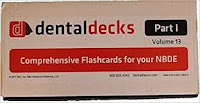Cement appear in radiographic like caries cannot distinguish from it:
- A- calcium hydroxide include hydroxyl group dental decks
- B- zinc phosphate
- C- glass ionomer
- E- zinc polycarboxlate
- F- none of above.
Breakdown of Options:
While some dental materials can appear similar to caries on radiographs, none of the options listed are completely indistinguishable from caries in all situations.
Here's a breakdown of each option:
A. Calcium hydroxide:
This material can show up as radiolucent (darker) on radiographs, similar to caries. However, its appearance is often more localized and defined than caries, and its presence usually has a specific purpose like lining a cavity.
B. Zinc phosphate:
This cement is often radiopaque (lighter) than caries, making it relatively easy to distinguish.
C. Glass ionomer:
This cement can appear radiolucent or radiopaque depending on the specific type. Some glass ionomers can be difficult to distinguish from caries, especially in early stages. However, their margins tend to be sharper and more defined than caries.
E. Zinc polycarboxylate:
This cement is usually radiopaque and easily distinguishable from caries.
Therefore, F. None of the above is the closest answer to your question. While some materials can appear similar to caries on radiographs, careful analysis of the radiolucency, margins, and location can usually help differentiate them.
Additional Factors:
Here are some additional factors that can help distinguish caries from other materials on radiographs:
- Shape:
Caries lesions tend to have irregular shapes with poorly defined margins, while most materials have smoother and more defined borders.
- Location:
Caries typically occur on the surfaces of teeth, while some materials are used in specific locations, like calcium hydroxide base materials under a filling.
- Size and depth:
Caries lesions often start small and gradually grow, while material placements are usually more uniform in size and depth.
- Clinical findings:
Combining radiographic findings with visual examination and other clinical tests like percussion or transillumination can further help differentiate caries from other materials.
Ultimately, the best way to definitively distinguish caries from other materials is through a combination of radiographic interpretation and clinical examination by a qualified dental professional.
